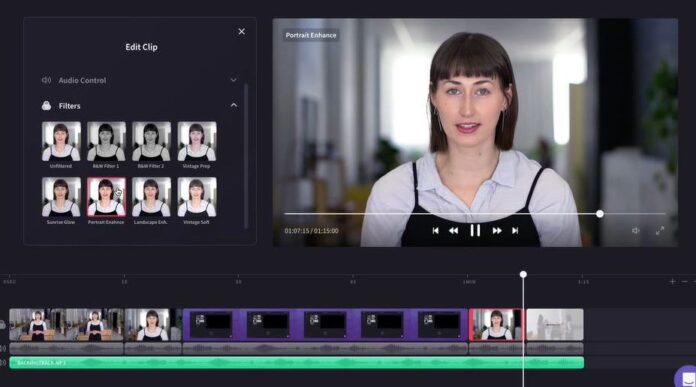Video has become a powerful marketing tool for all sorts of businesses. No matter what industry you operate in, any type of business can greatly benefit from creating and distributing top-notch video content. Thanks to the engaging nature of video, it has the potential to boost your presence online and reach more people than any other type of media content.
But what about transnational companies? They have an even bigger task on their plate. How do they create and distribute video content to an international audience who all speak different languages? Well, that’s where media subtitling can come to the rescue.
Any global business that produces multimedia content will know just how important effective subtitling is. The process encompasses a lot more than simply translating the words that are spoken in the audio. It’s all about optimizing the experience for the viewer – making it the same great content for every one of your viewers. Consistency is key here if you want to provide a high quality experience to each and every person who comes across your content. If your videos are a part of your marketing strategy, it’s even more important to get your subtitling right, because it could be the thing that secures you a sale too.
Professional subtitling services can help you achieve the greatest possible results with custom-built solutions. Check TransPerfect for more information. But in the meantime, here’s 5 multimedia subtitling tips and tricks that every video content producer should know.
1. Know your audience

The first thing you need to do is know who is watching your multimedia content. Understanding your audience’s needs and turn-ons and offs is crucial for ensuring you provide the best video watching experience for them. And everyone is different – it really depends on what their reasons are for watching your content and how they prefer to do so. For example, find out what they prefer – subtitling or dubbing? Do you need to offer both
Plus, subtitling shouldn’t just be a word-for-word translation. Literal translations are a surefire way to alienate your foreign language viewers – not to mention damage your reputation. If your translation is sloppy and doesn’t make sense, viewers will perceive your company as lazy and uninvested in their needs.
To avoid this happening, you have to gain a deeper understanding of the language, customs and culture of the market you’re subtitling for. Knowing the culture you’re connecting to is how you’ll be able to avoid confusion or awkward inappropriateness.
2. Think about word speed and line length
Your subtitles should be easy to read and undistracting – they’re not the main star of the show here, your video content is. So it’s important to think about the word speed and line length of your subtitles too so they don’t distract the viewer and hinder their ability to consume your content.
Ideally, subtitles shouldn’t take up more than 2 lines on the screen. They can also appear at the top or bottom of the screen, depending on what’s in the frame – they can vary so you don’t block out important visual cues. The average word speed should also be around 150 – 200 words per minute so your viewers can both watch the video and read the subtitles without missing anything.
3. Don’t rely on auto-captioning

Most social media platforms have an auto-captioning feature – but stay away from these! They’re basically the subtitling version of Google Translate. If you rely on automatically generated captions, your videos will be full of errors and inconsistencies, making it hard for audiences to follow along. Using auto-captioning is simply a no-go if you want professional and accurate results.
Instead, source your captioning from professional translation services that can offer you specialized subtitling solutions no matter what type of content you produce. They’ll take into account regional dialects, screen sizes and more.
4. Cut out any irrelevant information
It’s worth considering that some parts of your video’s audio simply might not need subtitling. For example, you don’t need to include background noises or irrelevant dialogue that can take up vital room in your subtitle text. There’s no need to convolute the subtitling with unnecessary information – so don’t be shy when making cuts. Leaving this excess information in also can come across as lazy subtitling to your viewer, which nobody wants to do. It’ll only result in a higher quality media experience for your viewers, so it is always a good move.
5. Don’t be lazy or cut corners with text-heavy videos

Not all videos are made the same, which means your subtitling solutions can’t be a one-size-fits-all approach either. Depending on the purpose and nature of the video you’re creating subtitles for, you may need to make tweaks to the video before even putting subtitles on the screen. This applies to text-heavy videos and video content that doesn’t even have spoken word or voiceover content to translate. If it’s a text-heavy video that features animated designs and on-screen wording, just adding subtitling might not be enough to provide a seamless watching experience. In fact, it can often overcomplicate it.
In this situation, it’s best that you fully localize and translate the video directly, not just stick a whole load of new subtitles over the top. Added subtitles will be far too much text for the viewers to keep up with. So don’t be lazy. Instead, replace design elements with localized versions or create new videos with simplified text.
Media subtitling solutions for success

Each aspect of the content you create as a company has the potential to either add to the customer experience, or damage it. And even though subtitling seems like a small thing, it can make a big difference to how easy or difficult it is for your customers to understand your content.
Subtitling is an integral part of the video production process, and is much more complex than it seems at first. The best subtitling solutions are the ones that cater to the individual characteristics of each piece of content, and that keep the viewer in mind at all times. And with these five tips, you’re sure to do just that and create subtitling solutions that are seamless and effective.









